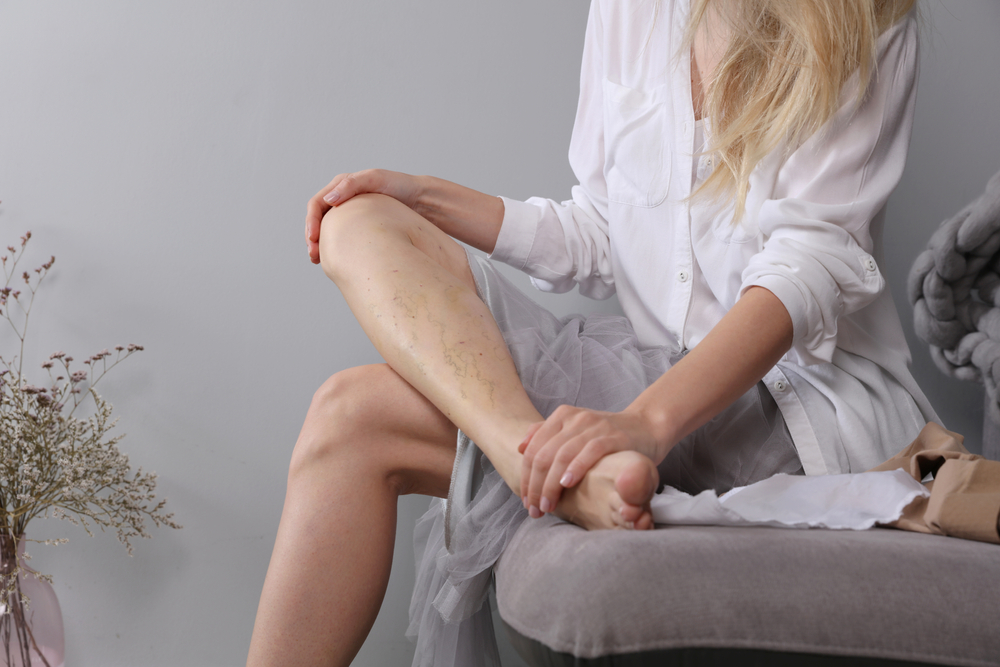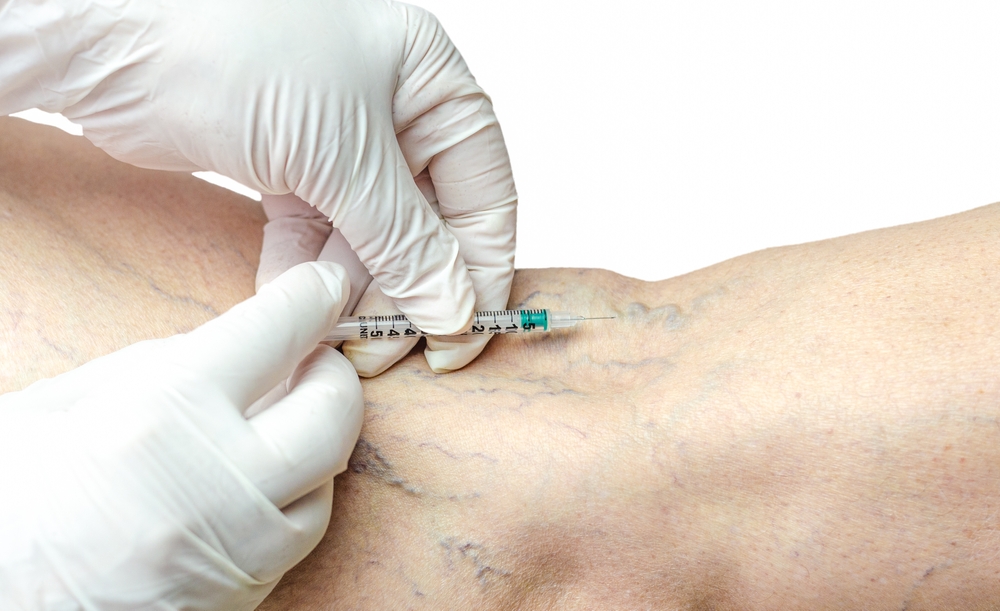If you’ve noticed spider veins or small varicose veins on your legs, you’re not alone in seeking effective treatment options. These visible veins can affect your confidence and comfort, making you hesitant to wear shorts, skirts, or swimwear.
Sclerotherapy is a proven, minimally invasive treatment that has helped countless patients achieve smoother, clearer-looking skin by targeting problematic veins. Keep reading to learn how sclerotherapy helps improve the appearance of veins!
What Is Sclerotherapy and How Does It Work?
Sclerotherapy is a medical procedure that involves injecting a special solution called a sclerosing agent directly into spider veins and small varicose veins. This solution irritates the lining of the blood vessel, causing it to collapse and eventually fade.

The procedure has been used for decades and is considered the gold standard treatment for spider veins and small varicose veins. Your provider at Calkin & Boudreaux will use a very fine needle to deliver the sclerosing agent precisely into the targeted veins.
The sclerosing agent solution causes the walls of the treated vein to swell and stick together, effectively sealing the vein shut. Blood that would normally flow through these veins is naturally rerouted to healthier veins deeper in the leg.
Over time, the sealed vein is absorbed by your body’s natural healing processes and gradually fades from sight. Most patients begin to see improvement within a few weeks, with full results typically visible after several months.
What Types of Veins Can Sclerotherapy Treat?
Sclerotherapy is most effective for treating spider veins, which are small, thin veins that appear close to the skin’s surface. These veins often look like a web or tree branch pattern and can be red, blue, or purple in color.
The procedure can also treat small varicose veins, typically those that are less than 3 millimeters in diameter. Larger varicose veins may require different treatment approaches, which your dermatology provider at Calkin & Boudreaux can discuss with you during your consultation.
Who Is a Good Candidate for Sclerotherapy?
Most adults with spider veins or small varicose veins are good candidates for sclerotherapy. The treatment is particularly effective for people who want to improve the appearance of their legs and are in generally good health.
However, certain conditions may make sclerotherapy unsuitable, such as pregnancy, blood clotting disorders, or severe underlying vein disease. Your provider at Calkin & Boudreaux will evaluate your medical history and current health status to determine if sclerotherapy is appropriate for you.
What Happens During a Sclerotherapy Session?
Your sclerotherapy appointment at Calkin & Boudreaux typically begins with a thorough examination of the veins to be treated. Your dermatology provider will identify the specific veins that will benefit most from treatment and develop a personalized treatment plan.
During the procedure, you’ll lie comfortably while your provider uses a very fine needle to inject the sclerosing agent solution into each targeted vein. Most patients describe the sensation as a mild burning or cramping that lasts only a few seconds per injection.
Dr, Shirlene Jay, board-certified dermatology provider at South Bay Dermatology, a Golden State Dermatology affiliate, explains the patient experience:
“Many patients are pleasantly surprised by how comfortable the sclerotherapy procedure is. The needles we use are extremely fine, and most injections cause only minimal discomfort that resolves quickly. We take great care to ensure each patient feels relaxed and informed throughout the entire process, and many patients find the treatment much more tolerable than they initially expected.”
How Many Treatments Will I Need?
The number of sclerotherapy sessions required varies depending on the extent of your vein issues and your individual response to treatment. Most patients need between 2 and 4 treatment sessions spaced about 4-6 weeks apart to achieve optimal results.
Some patients may see significant improvement after just one session, while others with more extensive vein networks may require additional treatments. Your dermatology provider at Calkin & Boudreaux will monitor your progress and adjust your treatment plan as needed.
What Should I Expect After Sclerotherapy?
Immediately after your sclerotherapy session, you may notice some redness, swelling, or bruising around the injection sites. These side effects are normal and typically resolve within a few days to a week.
Your provider at Calkin & Boudreaux will likely recommend wearing compression stockings for a specified period to support the healing process and optimize your results. You’ll also receive specific aftercare instructions to ensure the best possible outcome from your treatment.
Paula Rood, NP-C, at the SkinLab Napa Valley, a Golden State Dermatology affiliate, shares insights about post-treatment care:
“Recovery from sclerotherapy is generally very straightforward, and most patients can return to their normal activities immediately after treatment. We recommend avoiding strenuous exercise for the first 24-48 hours and wearing compression stockings as directed. Walking is actually encouraged as it promotes healthy circulation and supports the healing process. Most patients find that following these simple guidelines leads to excellent results with minimal downtime.”
When Will I See Results and How Long Do They Last?
You may begin to notice some fading of treated veins within 2-4 weeks after your sclerotherapy session. However, full results typically become apparent after 2-3 months as your body gradually absorbs the treated veins.

It’s important to be patient during the healing process, as some veins may initially appear darker before they fade. Your dermatology provider at Calkin & Boudreaux will schedule follow-up appointments to monitor your progress and determine if additional treatments are needed.
Successfully treated veins are permanently eliminated and will not return. However, it’s important to understand that sclerotherapy doesn’t prevent the development of new spider veins or varicose veins in the future.
Factors such as genetics, hormonal changes, pregnancy, and prolonged standing or sitting can contribute to the formation of new problematic veins over time. Maintaining a healthy lifestyle and following your dermatology provider’s recommendations can help minimize the development of new vein issues.
Schedule Your Sclerotherapy Consultation
If spider veins or small varicose veins are affecting your confidence or comfort, sclerotherapy may be an excellent solution for you. The experienced dermatology providers at Calkin & Boudreaux have helped many patients achieve clearer, smoother-looking legs through this proven treatment.
Don’t let visible veins keep you from feeling your best or enjoying activities you love. If you have questions about your skin, schedule an appointment at Calkin & Boudreaux today!